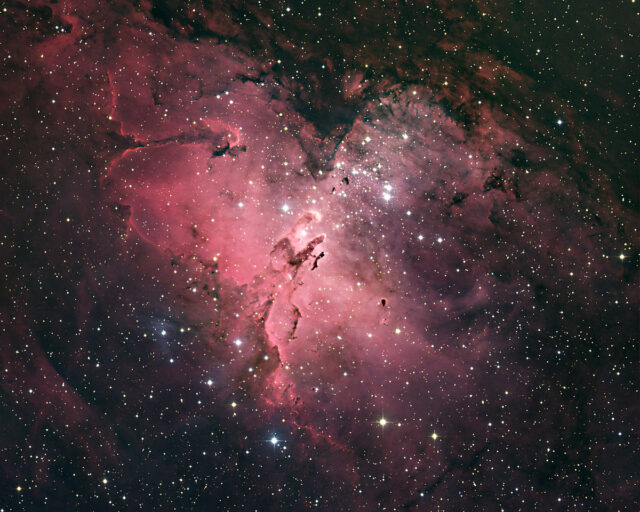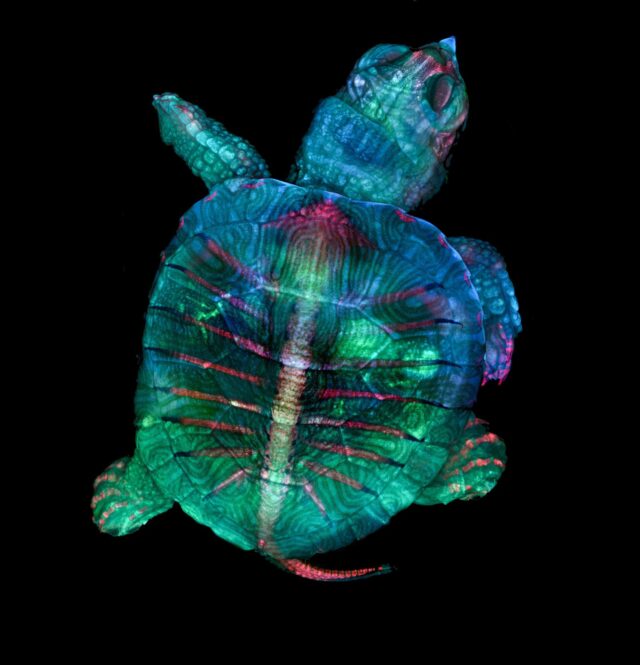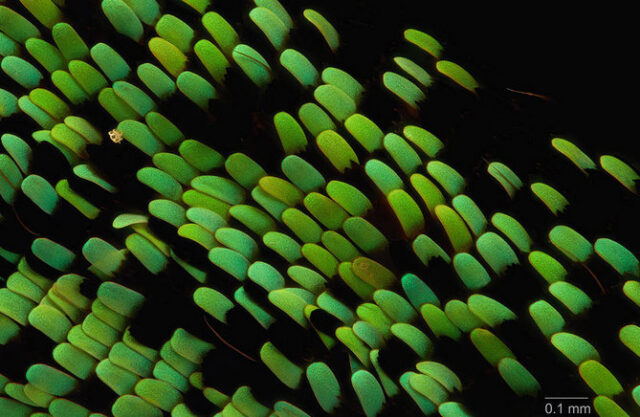Astrophotography, holography, electron microscopy, image stacking, biomedical photography, and photogrammetry aren’t your typical topics discussed by photographers at presentations. Only a few have the knowledge to speak about these subjects, and these experts are coming together to educate and inspire an online audience over two days in July.

The BioCommunications Association (BCA), an eclectic group of international science and medical-based photographers, will cover these topics and more at their online International Symposium on July 20 – 21, 2022.
Photography-related speaker and workshop events are a dime a dozen these days. There is no shortage of professional photographers chomping at the bit to share technical and inspirational tutorials on photography fundamentals like studio lighting, editing, macro photography, landscapes, portraits, weddings, business structure, and so on.
The same cannot be said about talks on, say, vehicle accident forensic photography, or holography and holograms, or microscopy that uncovers the beauty of a turtle embryo. It’s fair to say the BCA International Symposium dares to be different, and there is some fascinating left-field stuff in there.

The program includes 15 international speakers, including four from Australia and two international RMIT alumni.
A little info about the BCA. It’s a group of around 100 imaging professionals who operate in the biological fields. Their expertise fills a niche yet broad spectrum of disciplines ranging from medical imaging, museum and specimen photography, through to science-based specialties like astrophotography, photomicrography, and so on.
While the symposium presenters are typically technical academic experts, the talks will be done in layman’s terms to ensure attendees won’t feel like they’re stumbling into an in-depth university lecture riddled with scientific jargon.
‘We want to share technical photographic experience with people who normally wouldn’t interface or know about that, but might be interested in it,’ Gale Spring, BCA Symposium program chair, forensic photographer and RMIT professor, told Inside Imaging. ‘It’s not deep. We’re not going down into the hard mathematics or physics of it all to preach to the converted. It’s to elevate the awareness of our members with anybody interested in imaging. We’re trying to catch the imagination of people who may say “I don’t know anything about holography, maybe I’ll tune in”.’
Australian speakers include legendary astrophotographer, David Malin, who will talk about how he participated in pioneering astronomical photography; medical photographer Phred Petersen, whose talk is on Schlieren photography, a method used to observe natural, and often beautiful, fluid flow which is invisible to the naked eye; Royal Children’s Hospital 3D medical photographer, Robert Reitmaier, who will demonstrate how 3D imaging is used to evaluate treatment; and Queensland Museum collection imager, Geoff Thompson, who uses a camera focus stacking system to document small specimens at the museum.

‘We in Australia are playing a big role in the BCA symposium,’ Spring said. ‘Most of us in the BCA are academic minded, but have a major interest in photography. For example even though I don’t do portraiture or professional lighting, I’m keen to hear others speak about it. So we’re hoping this carries over to other photographers, who may be enticed by something different.’
There is some ‘straight photography’ presentations. Vancouver-based photographer, Jesse Andrewartha, an RMIT graduate with a bachelor of Applied Science in Photography, is showcasing a series of analog silver halide film pictures from his exhibition, ‘Transmutations: Visualizing Matter | Materializing Vision‘. It explores the history, legacy and radioactivity of uranium mining during the twentieth century in North America. Captured over the course of three years using exclusively analog silver halide film, Andrewartha traveled on multiple expeditions with hundreds of pounds of photographic equipment, from sub-Arctic regions of Canada to a quarter mile inside the historic uranium mines of southern Utah.
Then there are slightly more out-there sounding presentations, such as ‘Photography Transillumination Techniques: Multicystic Peritoneal Mesothelioma‘ by medical photographer, Marie Jones. Although this is also more ‘straight photography’, with Jones explaining how she uses professional lighting and photographic techniques to create a record of a rare cycstic tumor that allows clinicians to better understand the condition.
‘It’s these kinds of people who have very interesting and broad talents,’ Spring said. ‘This is stuff people don’t see – they just don’t know about it. And I can guarantee you that all speakers would be more than willing to respond to e-mails with questions from anyone. We’ve hand-selected people who excel in their chosen field, and are personable and willing to share.’
Pre-Covid BCA members from around the world travelled to meet for an annual in-person symposium, with the event including a series of ‘hugely popular’ presentations. While international travel and get-togethers are now back on the cards, the BCA resolved to shift the symposium online. This is to make it possible for more members to attend, and seize the opportunity to showcase the members’ fields to a wider audience.
‘Most of these people do photography for scientific purposes, yet have a sense of the artistry with what they do. And some of it is pure art – the kind you hang on the wall and philosophise about. The speakers understand the [artistic] aesthetic that’s hidden behind what they do. David Malin has talked about this for over two decades – the art and the science of astrophotography. He’s very much an artist in the way he composes and creates images of the stars. Holography – same thing. It’s a science, but most of us look at it as an art form.’
The BCA International Symposium is running on weekdays, July 20 – 21, with scheduling to a US East Coast time zone. However all sessions are recorded and can be viewed for two weeks after the event. Tickets are US$60 for non members. Click here for more info.





Be First to Comment